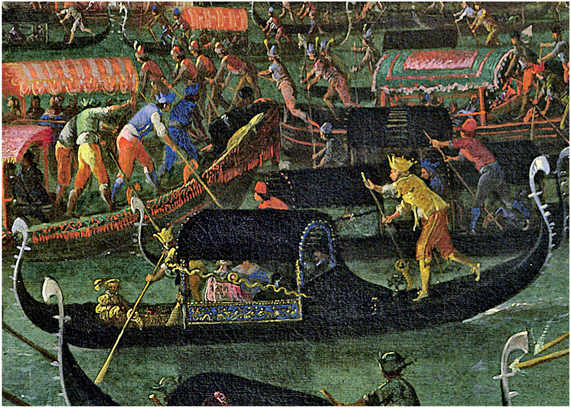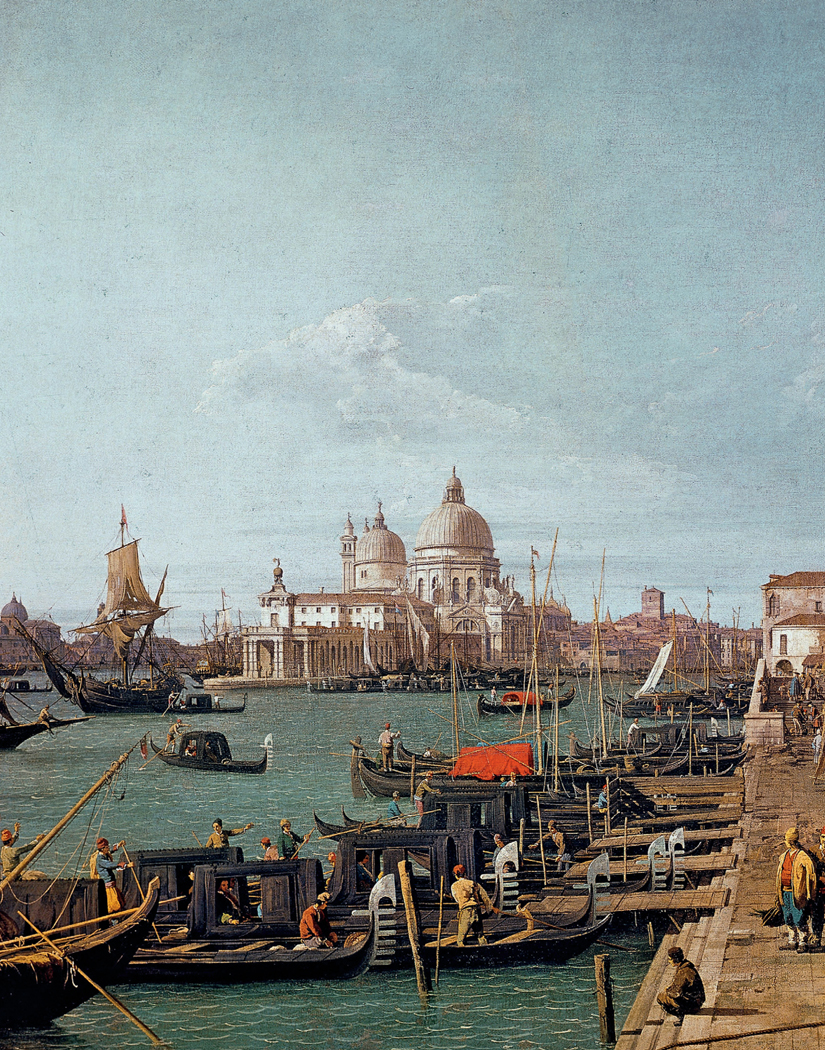
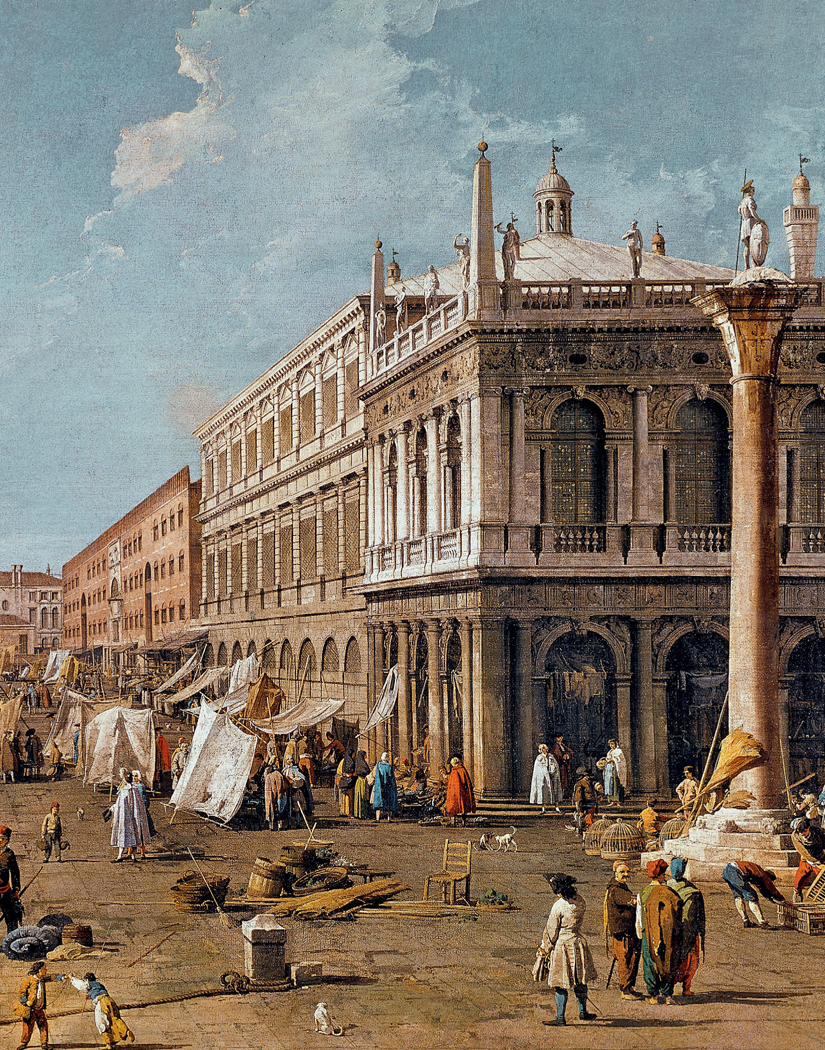
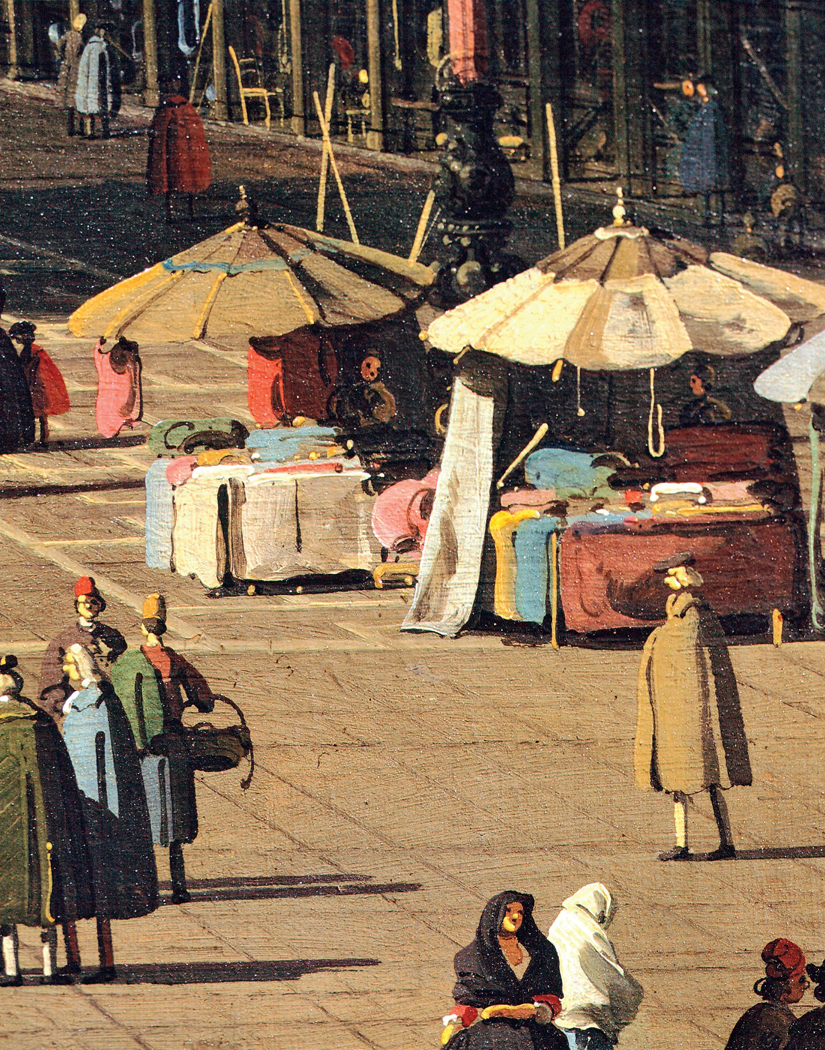
Can a Boat Be a Fashion Statement?
Venice is a tidal city, a fact evident to anyone who takes a look at the water in the canals. At six-hour intervals, the tide changes direction and either begins to flow out of the laguna in which the city rests or to flow in, bringing with it cleaner water from the Adriatic. This natural flow brings shrimp, crabs, and fish into the bacino and removes whatever waste has gone into the water since the last tide, a twice-daily cleansing that has happened with predictable exactitude ever since there were tides.
Water is not the only medium that changes in Venice: ever since its foundation, products and fashions have flowed naturally into and out, reaching Venice more quickly than land-locked cities, mountain cities, desert cities. Unlike the tide, which is predictable and measurable, new ideas and new desires slipped in when they will, their force and velocity as impossible to calculate as they are to resist.
The history of Venice contains frequent accounts of the attempts of its rulers to protect the citizens of the city from these other invasive tides, but this has never been an easy thing to achieve. Accustomed as they are to living in a city of twists and turns and calli that undulate as if with a will of their own, Venetians were not and are not likely to have any special sympathy for rules or laws that attempt to control the manner in which they are expected to behave. People who see daily evidence of the irresistible force of nature are not likely to be much interested in restraint or the attempt to restrain their desires. City authorities, faced with the invasive tides of luxury goods and adornment, attempted to heap up legal dykes and sea walls to block their entry to the city. The cause of this, I believe, was economic. An English poet wrote, “Getting and spending, we lay waste our powers.” This was a truth known only too well by the original guardians of Venice’s wealth and well-being (often considered as one and the same). Consider for a moment: money spent on transitory beauty – a dress, a brocade jacket, a new pair of satin shoes – is money that is removed from the solid, accumulated wealth of the city. It is paid to foreign exporters: the silk, the design, the manufacture were likely to come from France or the Orient, so the money escaped from the city and thus would do nothing to further its glory or its power. What is more transitory than a fashionable garment? This year’s glory is next year’s cleaning rag. A palazzo, a pile of gold ducats: these were examples of real wealth, not some whim of fashion that could evaporate as quickly as it was created. Of course, the prohibitions against outward displays of luxury and extravagance were presented in the costume of morality and religion: a plainly-dressed woman was likely to be a virtuous woman. A Sixteenth Century law declared that the collars of women’s dresses could not bear any hand-worked decoration – “al collo nessun lavoro.” Could this have been a response to the statistic-gathering city administration’s report, which does not mention the nature of the sewing on their collars, of 11,164 prostitutes working within the city in 1509? Five years later, the city formally established and empowered the Provveditori alle Pompe to oversee and enforce the sumptuary laws: the number of rings, necklaces, even courses at dinners was to be strictly regulated.
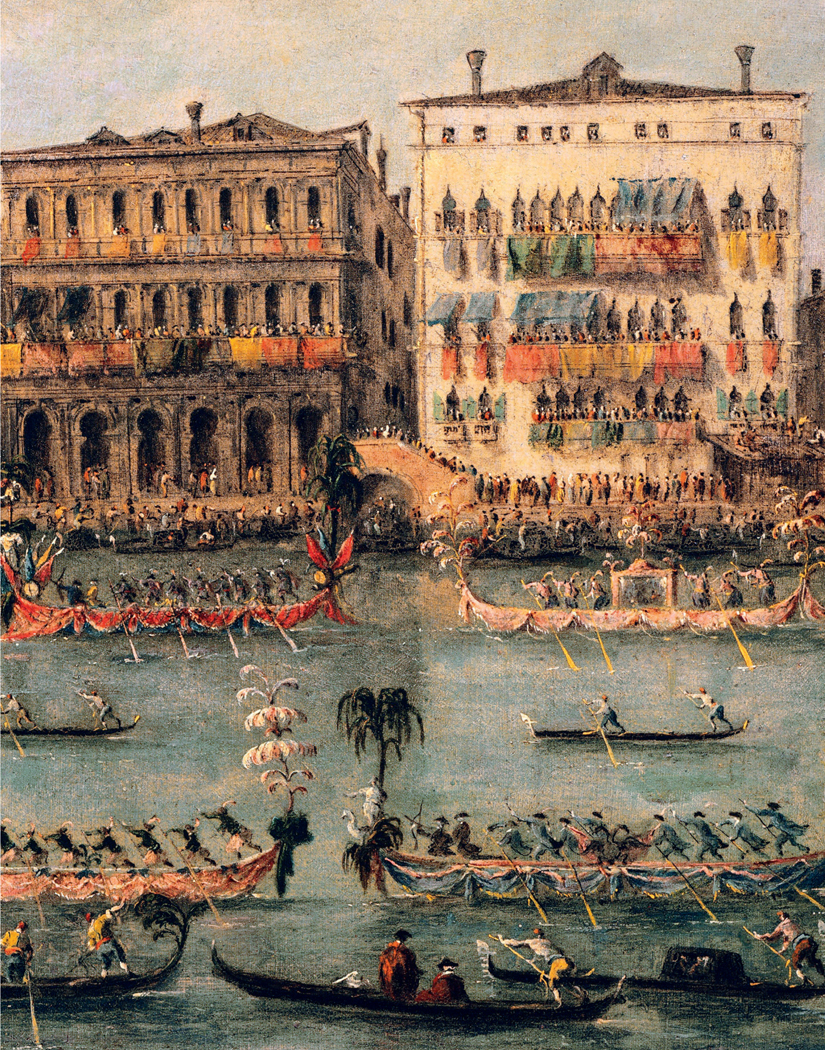
But the wily, beauty-seeking, pleasure-seeking Venetians seemed able – much in the manner of today’s athletes, whose performance-enhancing drugs remain one long stride ahead of the blood tests meant to detect yesterday’s drugs – to elude the enforcers of the sumptuary laws: why else would more and more detailed laws need to be passed? The prohibition against gold and silver as personal adornment is a common thread in the story of these laws. Trade was based on these two elements, and the authorities would not tolerate their being frittered away in mere decoration, certainly not when there was the entire Orient in which they could be invested and made to grow.
At this point, the question, “Where’d the gondola go?” would be quite in order. It was floating both ahead of and amidst the other conspicuous proofs of Venice’s wealth and ability to consume and thus attracting to itself the Basilisk eye of the Provveditoriato alle Pompe, ever ready to interfere when they sensed that someone was spending too much money on the evanescent rather than on the permanent. It was at this time that the decoration of the gondola was severely regulated and the adornment limited to the severe form of the ferro that can still be seen today. The records exist: on 8 October, 1562, the Senate forbade “boats that are not plain” and forbade any felze that was gilded or painted and carved.” This apparently didn’t work, for by 1584, anyone who dared to row a boat that was too elaborate risked “prison, the galleys” or the very menacing “other.”
What did the gondola, taking women and men to meet friends or lovers, contribute to the economic betterment of the city? How was trade advanced by these laguna-bound boats, capable of transporting only a few people and then usually at the pace of a walking man?
Centuries before, they had carried the population to safety from the invading hordes from the North, but that had been a passive service, like the taxis that carried troops to the defense of Paris in 1914. What heroic defense of the city was ever made by the gondola? During the Battle of Chioggia in 1380, it was the fleet of war ships and not the puny gondola that won the victory.
The gondola, however, was never intended for defense or attack, only as a means of transportation, and as that it is an unqualified success story. By the 18th century, there were somewhere between eight and ten thousand gondolas. Venetians used them as a means of easy transportation through their tangled city, and their decks became a common source of musical entertainment. Even then, it should be noted, the gondola was vastly outnumbered by boats serving the commercial interests of the city. A look at the paintings of Guardi and Canaletto suggests a reality as true today as hundreds of years ago: most boats in Venice are not gondolas. People have the option of walking to the Rialto Market. Cabbages do not.

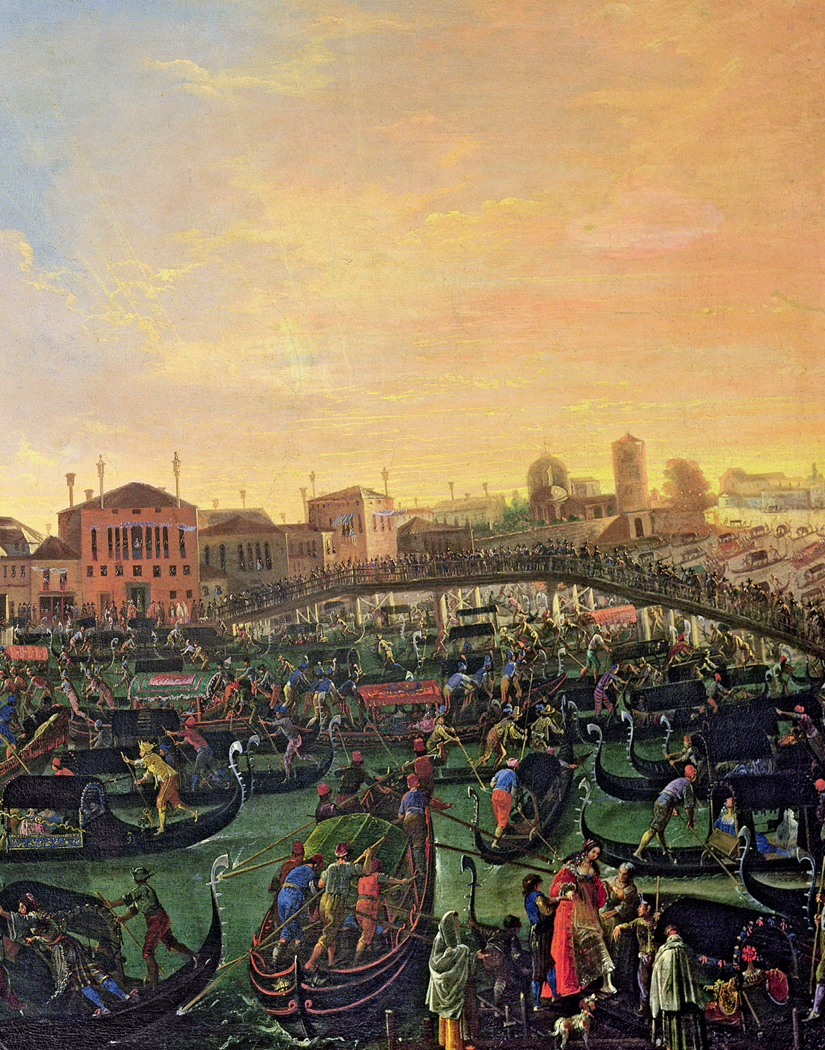
Today, in a world run mad with the idea of image, the stature of the gondola has increased, regardless of its cosmetic changes. Las Vegas wants some, and gondola builders send them all over the world. Many of the foreigners who come to Venice to be married insist that a gondola be part of the ceremony. Miniature plastic gondolas – some lit from within – are on sale in many Venetian shops, as are glass ones. There are eyeglass frames in the shape of a gondola. The silhouette can be seen on T-shirts and coffee mugs, silk scarves and ties. There are gondola ashtrays and ceramic plates and plaques with gondolas. And the gondola hat is known as just that.
During the day, this tourist kitsch is laughable, but it cannot extinguish the fascination. A late-night walker, crossing a bridge or approaching a riva, will sometimes sense, not hear, the sibilant approach of a gondola, its prow slipping through the waters. Or perhaps the ferro will emerge from a winter fog for a moment, slide by, only to disappear again, a bit farther on.
The moment lies somewhere between the mysterious and the magical, and perhaps the unsung melody of a barcarola is in the air: it’s there and then it’s not. It could be happening now, but it could have happened exactly the same way hundreds of years ago in the same way. A tidal city, where things come and go and come again.
